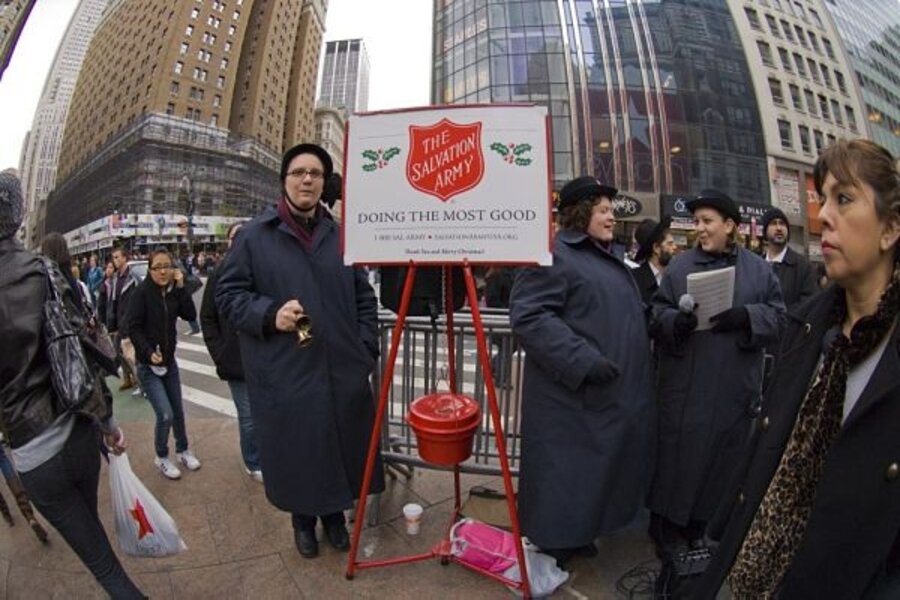ECONOMIC SCENE: No quick recovery for charitable giving
Americans generally pride themselves on their generosity. And they should.
But the “great recession” has crimped their giving. In 2008, charitable donations amounted to $307.65 billion, down 2 percent from 2007, according to GivingUSA Foundation. Charity could take a bigger hit this year – despite a rising need for help because of the slump.
For example, donations to the nation’s largest nonprofits, including prominent universities, hospitals, and foundations, are expected to fall 9 percent this year, according to a survey by The Chronicle of Philanthropy last month. That’s the steepest drop the publication has reported in 17 years of surveying the 400 largest charities in the United States.
Similarly, giving to foundations is likely to decline more than 10 percent, the Foundation Center in New York noted earlier this month. Many of the nearly 600 foundations surveyed have cut staffs to weather the recession.
One of the few exceptions was religion. Some 37 percent of 1,540 congregations reported an increase in donations in the first half of 2009 compared with the same period in 2008. Another 34 percent reported fundraising to be flat, according to a survey by the Lake Institute on Faith & Giving at Indiana University, Indianapolis.
“Religious giving appears to be recession-proof,” says Timothy Seiler, director of a school for fund-raising at Indiana University.
If history is any guide, easy times for charities won’t return soon. Looking at individual giving after the Depression and the deep 1973-75 recession, a study by GivingUSA concluded that inflation-adjusted giving by households and individuals won’t reach their 2007 level until at least 2012, if the recession ended in June.
The study offers hope that today’s higher per capita incomes, bigger proportion of college graduates, and greater support for secular causes might bring about a faster recovery for charitable giving.
“A lot depends on how the stock market does,” says Thomas Pollak, program director of the National Center for Charitable Statistics at the Urban Institute in Washington.
The wealthy, many with stock portfolios, are a big source of charity.
Also, if people are out of work, they are less likely to give as much, he adds.
Another key factor: public policy. The largest element in the nonprofit sector is health activities – nonprofit hospitals, medical research institutions, community health clinics, etc. These will need to adjust in coming years to healthcare reform, notes Mr. Pollak. Most largely rely on fees for their services. In the future, the government presumably will play a larger role in health-industry finances.
Many Americans regard the US as unique among industrial nations in the large size of its nonprofit sector. That’s a “myth,” says Megan Haddock, international project coordinator at the Center for Civil Society Studies at Johns Hopkins University in Baltimore.
Excluding religious organizations, the US has 9.8 percent of its economically active population employed or volunteering in its nonprofit sector. That’s relatively high among 36 countries studied. But the Netherlands is the champ, with 14.4 percent. Belgium has 10.9 percent; Ireland, 10.4 percent. Despite relatively expensive social welfare programs, many European countries also are generous to nonprofits.
Many nonprofits rely heavily on government funding – about 35 percent, on average, and only 12 percent on philanthropy, Ms. Haddock says.
So when President Reagan in the 1980s cut government support for nonprofit groups to trim federal spending, arguing that private charity would take up the slack, he was “cutting the legs off the nonprofit sector,” says Haddock. The action hurt nonprofit hospitals and private universities.
See also:
Holiday giving: How to choose a charity
_____
— Tap in to the Money section's Twitter profile.





